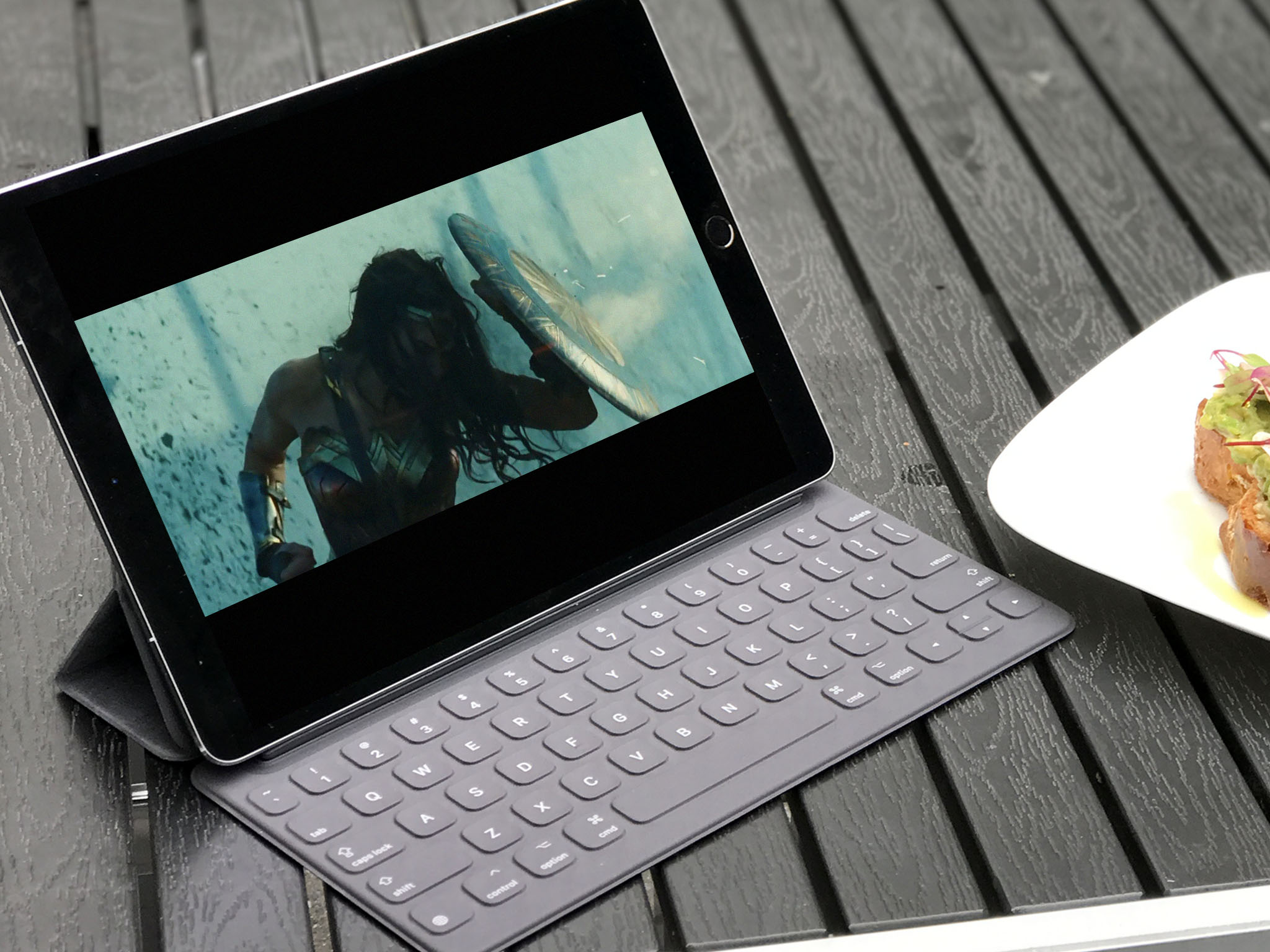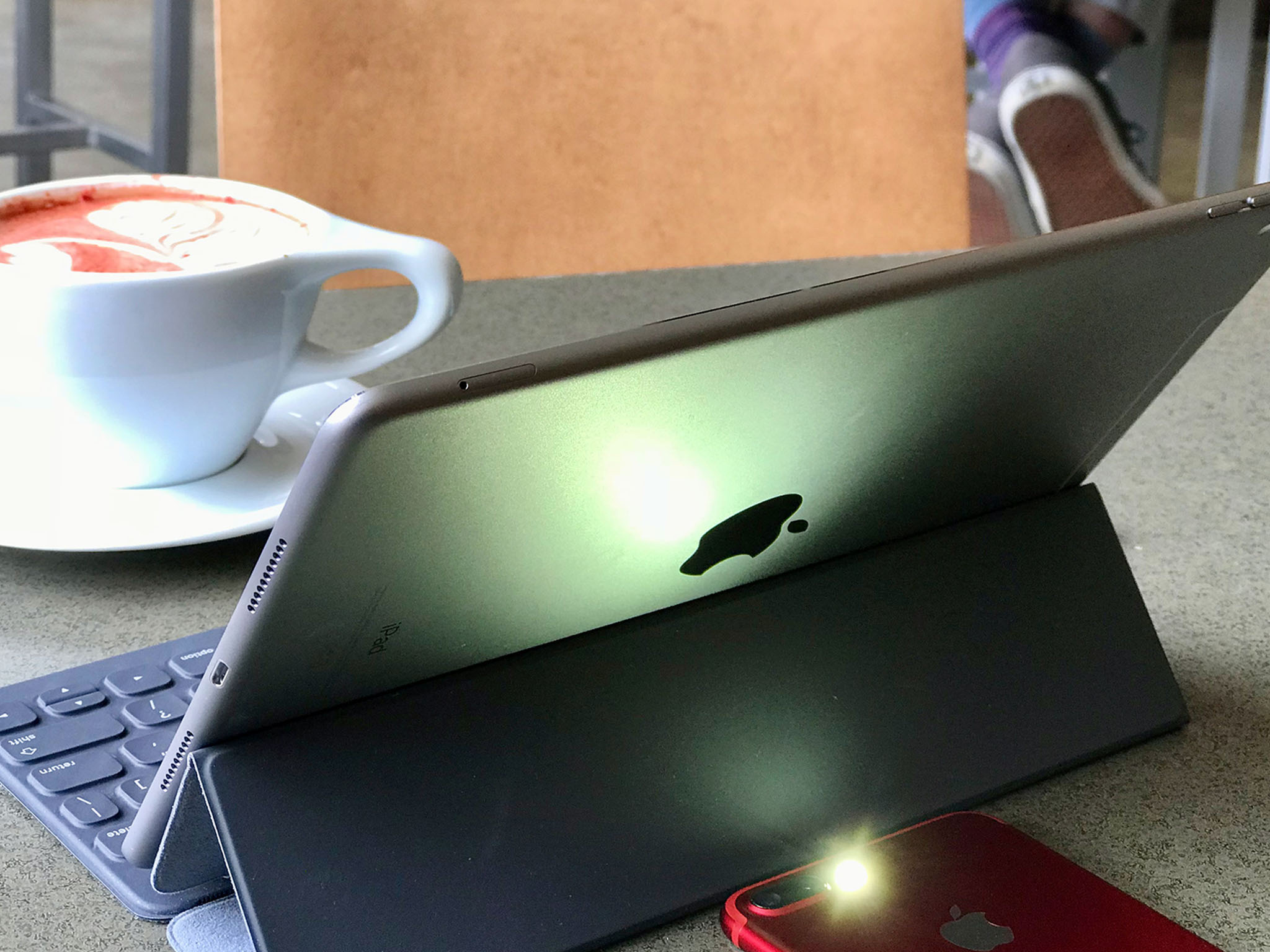iPad 7 (2019) Preview

First, it was a new product category to fit somewhere between iPhone and MacBook. That despite, of course, a decade of Tablet PC that had come before it. Then, it was the intersection of technology and the liberal arts. Most recently, it was the clearest expression of Apple's vision for the future of computing… Even as Apple continued introducing new Macs. but what's a computer, right?
It's the iPad, and rumor has it we're about to get a new, slightly bigger, and overall improved entry-level model again this spring.
But what does that mean, exactly?
Rather watch than read? Hit play on the video above!
The Rumors
While rumors surrounding the 7th-generation iPad — non-Pro version, linear successor to the iPad, iPad 2, iPad 3, iPad 4, iPad Air, iPad Air 2, iPad 5, and last year's iPad 6 — haven't been as volumenous as your average iPhone, there have been several over the last few months.

December 20, 2018, The China Times:
As for the 9.7-inch iPad will also be revised in 2019, the expected size will be enlarged to more than 10 inches, will drive sales growth.In addition, the low-priced version of 9.7-inch iPad is also planning to launch a new version of the product, the frame is narrower, the size will be enlarged to more than 10 inches is expected to be mass-produced in 2019, the second half of the year.
Past can be seen as prologue here: In 2016, Apple took the 9.7-inch iPad, kept the screen size but added Pro features like Apple Pencil, Smart Keyboard, and then topped it off with even higher-end bells and whistles, like TrueTone and a much better camera system.
Master your iPhone in minutes
iMore offers spot-on advice and guidance from our team of experts, with decades of Apple device experience to lean on. Learn more with iMore!
In 2017, Apple discontinued the 9.7-inch model for a new 10.5-inch model that had smaller bezels but a size Apple said was just perfect for both the on-screen and Smart Keyboard accessory.
Now that Apple has also discontinued the 10.5-inch iPad Pro in favor of an even newer, redesigned, 11-inch iPad Pro, that opens up the non-Pro's 10-inch potential, with lack of differentiation no longer a factor.
January 29, 2019, Steve Troughton-Smith on Twitter:
It's hard to glean much information about J210/J211, and J217/J218, the upcoming iPad models. It seems like both iPad sizes support a Smart Keyboard and Pencil, but it's possible that neither include Touch ID (nor Face ID). Hard to imagine Apple shipping sans TouchID unless for $It's hard to glean much information about J210/J211, and J217/J218, the upcoming iPad models. It seems like both iPad sizes support a Smart Keyboard and Pencil, but it's possible that neither include Touch ID (nor Face ID). Hard to imagine Apple shipping sans TouchID unless for $— Steve Troughton-Smith (@stroughtonsmith) January 29, 2019January 29, 2019
It seems like both iPad sizes support a Smart Keyboard and Pencil, but it's possible that neither include Touch ID (nor Face ID). Hard to imagine Apple shipping sans TouchID unless for $
Those both sizes being the 7.9-inch iPad mini, which I've covered previously, and the new 10-inch full-ish sized iPad non-Pro.
Last year Apple brought Pencil support to the lower end, then 9.7-inch model, so that continuing obviously makes the kind of sense that does. Unless Apple intends to bring over all or part of the new iPad Pro's flattened redesign, which is necessary to house the magnetic inductive charging pad for Apple Pencil 2, and they might not be just yet, the less expensive iPad will likely also stick to the less expensive Apple Pencil.
As for the Smart Keyboard, now that the Pros have that all new design, maybe Apple feels like they don't need Smart Keyboard to be exclusive and maintain differentiation anymore?
Face ID is a different story since that's a big part of the new Pro models — and expensive — it's likely to stay exclusive for another year or to. No Touch ID, though? Unless Apple has some other easy authentication technology up their sleeves, and intend on debuted it with a new iPad instead of iPhone or Pro, that's harder to reconcile. At least for now.
January 30, 2019, Mark Gurman and Debby Wu, writing for Bloomberg:
Apple plans to release an updated version of its lower-cost iPad with a roughly 10-inch screen and a faster processor as early as this spring, according to people familiar with the plans. That device is expected to retain the Lightning port, according to one of the people.
The current 9.7-inch iPad packs the 2016 Apple A10 Fusion system-on-a-chip, which debuted inside the iPhone 7. The Fusion name is in reference to its two efficiency and two performance cores. I won't call the big.LITTLE, I've learned from that previous pain, but they were best in class a couple of years ago and still pack a healthy punch today.
Faster, though, likely means an Apple A11 Bionic, the chip that debuted inside the iPhone 8 and iPhone X last year. It had more efficiency and performance cores that, rather than being fused in pairs, could all operate independently and together. It also had Apple's first generation neural engine, which powered Face ID.
If Face ID really is unlikely for the non-Pro iPad this year, then there's still an extra year of substantive performance gains in the rest of that silicon, and boosts to machine learning and a variety of other tasks in the neural engine.
Retaining Lighting isn't a huge surprise either. Apple positioned USB-C as a decidedly Pro feature in iPad Pro and, besides, if Apple sticks to the original Pencil here, the only thing more awkward than the way it charges in the Lightning port would be trying to charge it with no Lightning port.
That and all the other accessories all the schools and enterprise customers have bought for the last few years that connect via Lightning.
On February 17, 2019, supply chain exfilitrator Kuo Ming-Chi dropped his first rumor bomb of the year, including:
Existing panel size 9.7-inch iPad upgrades to 10.2-inches.
Why 10.2 and not 10.5 like the previous generation iPad Pro? These are the questions that keep Jony Ive's industrial design team up and endlessly perseverating over CNC machines at night.
OK, not really, so despite being the aforementioned perfect size for on-screen and external keyboards, Apple might be wanting to keep the size down for education. But that's just a wild guess. We'll have to wait for Apple to explain the new sizes to know for sure.
The Questions
Will it finally get back the laminated screen that debuted with iPad Air 2 but became the exclusive providence of the iPad Pro line ever since the lower priced iPad emerged in 2017? If Apple wants to keep costs down, non-laminated will probably stick around. And that doesn't bode well for TrueTone dynamic white balance matching or ProMotion 120hz refresh rates. Though we may see the one before the other.

And sure, yes, Samsung has just shown off a new, mid-range tablet that, to the surprise of no one, looks a lot like the newly redesigned iPad Pro, albeit with much worse silicon and an OLED display.
Now, as of last year Apple still wasn't happy with the consistency of larger OLED displays, and they're almost certainly not happy with the huge markup Samsung's components division charges them for it, so it's my guess neither the technology nor the pricing work out for OLED on iPad, especially the low-end iPad, right now.
But, yeah, with that new tab on the market, the hardware pressure, if nothing else, is certainly on.
Will the cameras improve? There's currently an 8-megapixel on back and 1.2 megapixels on the front which, while enjoying the much better image signal processors of the A-series chipsets, have increasingly aging hardware. Again, it'll depend on what Apple can fit into the price point.
Same with radios, mics, and speakers. And given the iPhone XS, MacBook, and MacBook Pro lineup, the colors.
Which, hey, would at least still include the current coppery gold, something even the newly redesigned iPads Pro didn't get last year.
It also won't transform and roll out into a phone, like the Galaxy Fold or Huawei Mate X, also at least not yet. Apple may have been experimenting with foldables for years but they're nowhere near ready for primetime. And that's fine because I don't think I could take the $2000 price tag jokes all y'all would throw at me if they were.
The opportunity
It's not the popularity of the lower-end iPad line that fascinates me as much as Apple's strategy of continuously pushing the boundaries of hardware and pricing on the Pro end, but at the same time pushing their technologies like Apple Pencil and, maybe this year, Smart Keyboard, down to that lower end.
It makes me wonder if Apple couldn't do the same with iPhone. You know, like they did before with iPhone SE. Nothing helps take the sting off the top like a little bit of savings at the bottom.

Rene Ritchie is one of the most respected Apple analysts in the business, reaching a combined audience of over 40 million readers a month. His YouTube channel, Vector, has over 90 thousand subscribers and 14 million views and his podcasts, including Debug, have been downloaded over 20 million times. He also regularly co-hosts MacBreak Weekly for the TWiT network and co-hosted CES Live! and Talk Mobile. Based in Montreal, Rene is a former director of product marketing, web developer, and graphic designer. He's authored several books and appeared on numerous television and radio segments to discuss Apple and the technology industry. When not working, he likes to cook, grapple, and spend time with his friends and family.
